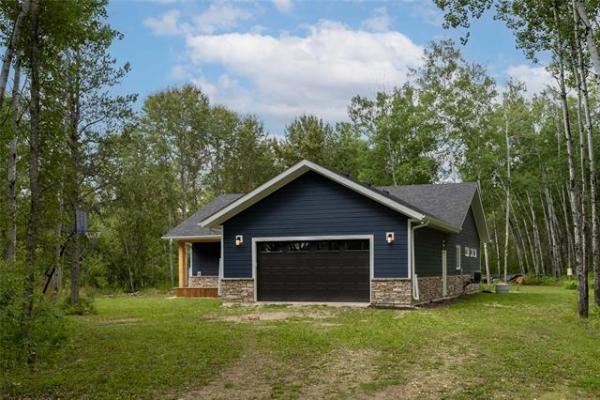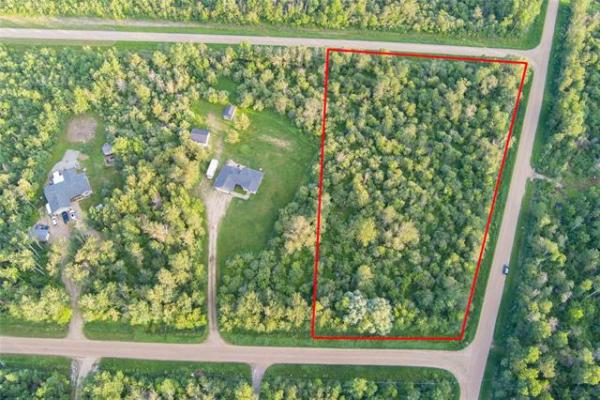Ground covers perform many functions in the landscape: defining property lines and spaces within the garden, replacing lawns and stabilizing banks.
The appropriate use of hardy ground-cover plants will help you achieve a finished look in landscape plantings, reduce weed problems and draw attention to landscape features.
We usually think of ground covers as low-growing plants such as creeping phlox, lily of the valley and horizontal junipers, but if we allow our imagination some latitude, we can see many taller plants can also perform these functions. Common snowberry can be used to cover and stabilize banks, dwarf evergreens such as cliff green or Japanese spurge can fill narrow spaces that are difficult to maintain, and heartleaf bergenia or daylilies can be used to define space within a yard.
Few ground covers tolerate foot traffic in the way lawn grass does. However, there are a number that will stand up to some traffic and are quite suited to planting between stepping stones or paving blocks. Pussytoes, whitlowort, creeping speedwell and thyme cultivars all thrive among a stone pathway.
Many other plants will form a dense cover that can replace lawns in areas that are difficult to mow or, because of shade, competition or harsh growing conditions, do not grow quality turf. Bearberry, Canadian wild ginger and Siberian barren strawberry all form dense cover under trees where shade limits the growth of grass. Siberian barren strawberry does equally well in sunny locations.
Other plants that thrive in full sun include rock cress, perennial alyssum, snow-in-summer, wild strawberry, sedum, hen and chicks and comb speedwell.
Taller plants such as Karl Foerster feather reed grass, dwarf bush honeysuckle, Turkestan burning bush or Joe Pye weed can be used to outline paths or fill corners and define spaces within the garden. These and others such as junipers, sumac, currants and gooseberries, roses and false spirea make effective barriers to prevent foot traffic where it is not wanted.
Ground covers can serve either to unify a planting or to divide areas within the landscape. Under planting shrubs with lady's mantle, snow-in-summer or periwinkle will unify a planting. Choose plants for foliage form and colour and flowers that complement the shrubs under which they are planted. Meadowsweet, bigroot geranium, false sunflower, shrubby potentilla or dwarf spirea can be used to separate areas or "rooms" in the landscape or to define property lines.
Ground covers cover ground in a number of ways. Some self-seed, but most spread underground by suckers or above ground by stolons. Suckering plants send up shoots from underground roots or stems called rhizomes.
Hostas, lungworts and blue grama grass produce short rhizomes that give a dense clumped appearance. Others spread by above-ground stolons and produce new plants at nodes. The most common example would be strawberries -- another is the dwarf Turkestan burning bush. Some ground covers such as creeping juniper and mountain avens root along creeping stems and spread to effectively hold soil.
A ground-cover planting will be more effective and easier to maintain if you plant enough plants to produce dense growth within a year. Once plants have covered the ground, most seeds will be suppressed and maintenance will be less onerous.
Preparation of the site is key to successful establishment. All vegetation should be removed with special care to eliminate perennial weeds such as Canada thistle and dandelions as they are difficult to control later. Evaluate the soil for suitability and fertility. If drainage improvements are required, do the grading. Adding organic matter will improve the tilth and fertility of the soil.
Once you have prepared the site, calculate the number of plants needed based on your desired spacing. Once you've chosen the variety or varieties and calculated the number needed, you're ready to visit nurseries or check catalogues to locate the plants. These may be purchased container-grown, bare root or plugs. If you're planting a large number, it may be more economical to buy bare-root plants in the spring or small plants grown in plugs.
If the cost exceeds your budget, most ground-cover plants are easily propagated. You can separate sucker shoots, divide clumps or produce new plants by layering branches. Some perennials will start easily from cuttings taken before flowering.
Newly planted ground covers benefit from mulching with organic materials. Mulch helps to control weeds and conserve moisture. Pruning young plants encourages branching and produces denser cover. Maintaining adequate fertility increases the success of plantings. Heavy clay soils retain nutrients well and usually provide sufficient nutrients with periodic additions of compost and organic mulch. Sandier soils hold nutrients poorly and benefit from the addition of slow-release fertilizer each spring.
Once ground-cover plants are well-established, they will shade the soil and greatly reduce germination of weed seeds. But until that time, hand-weeding is necessary. In areas that are difficult to weed, use plants that are allelopathic (prevent the growth of other plants) such as blue fescue grass or pussy toes or those that quickly produce dense cover.
To avoid insect and disease problems, choose plants that are resistant to common insect and disease problems. Most insects and diseases can be controlled by maintaining plants in a healthy condition, encouraging natural predators and parasites and occasionally hand-picking larger insects or syringing with a strong stream of cold water to dislodge small insects such as aphids.
Choice and establishment of appropriate ground-cover plants can solve a number of your gardening problems while lending a more finished look to your landscape.
Ground covers for dry, shady areas:
bunchberry
bigroot perennial geranium
creeping forget-me-not
dwarf Turkestan burning bush
pearly everlasting
Siberian barren strawberry
star-flowered Solomon's seal
Western Canada violet
wild sarsaparilla
Ground covers for dry, sunny areas:
yarrow
pussytoes
rock cress
silver sage
perennial alyssum
Dianthus spp.
blue fescue
sedum, stonecrop
speedwell, veronica
campanula
creeping juniper
wild strawberry,
woolly lamb's ears
Colleen Zacharias
Mixing it up
GARDENS take on a lush, mature look when all available space is planted with a mix of plants of different heights and textures.
Ground covers add the finishing touch to the perennial bed -- edging pathways, spilling over retaining walls, or blanketing problem areas such as the ground beneath evergreens where only the most determined plants will grow.
Lamium, for example, can be a very useful ground cover but can also be an aggressive spreader. Aureum is a less invasive variety and adds brilliant chartreuse colour and clusters of rose purple flowers to shady borders. A favourite of mine for brightening up shady borders is Majesty lungwort, which features unique silver-coloured leaves and rich, deep blue funnel-shaped flowers in early spring.
Hugh Skinner, today's contributor, is co-author with Sara Williams of Best Groundcovers & Vines for the Prairies, an indispensable guide that lists ground covers for all applications -- from full sun to moist, dry shade, including slopes and banks. Hugh is president of the Manitoba Horticultural Association and maintains a large collection of plants in the Frank Skinner Arboretum in Roblin.
colleen.zacharias@gardensmanitoba.com



